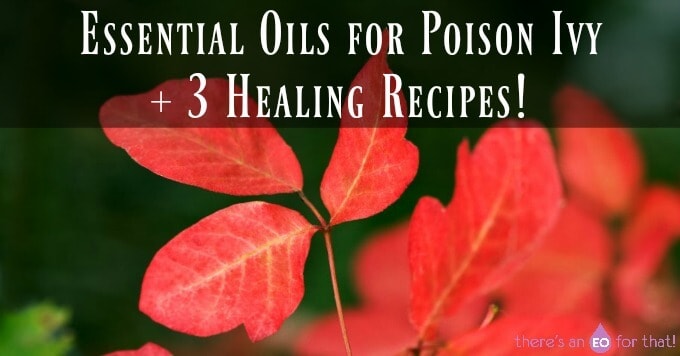
Essential oils for poison ivy are at the forefront of my mind these days. As warmer weather approaches, the allure of outdoor activities like gardening, hiking, and camping becomes ever greater as green things emerge once more, bringing tidings of spring and summer to come. This time of year is one of my favorites since it means I get to go outside and enjoy outdoor adventures, especially hiking.
I’m fortunate enough that Southern California has so many amazing hiking destinations, often accompanied by warm sunny days. The only downside to this mild climate is the groves of poison plants like poison ivy, oak, and sumac flourishing alongside the trails and creek beds.
Since I’ve had my share of weaving through said groves, I thought it would be useful to go over some of the best essential oils for poison ivy and other reactive plants.
I hope you find them useful, though I also hope you don’t need to use them!
The Best Essential Oils for Poison Ivy, Oak, and Sumac
Poison ivy (Rhus radicans L.) is a low-growing, vine-like plant often found in forests, meadows, hedges, and alongside mountain trails and roadsides. It has purple-red leaves in the spring, bright green and shiny leaves in the summer, and vivid red-orange leaves in the fall and winter months.
Here are a few poison ivy pictures for reference:
It is the urushiol-rich oils that cover the entirety of the plant that give it its skin reactive properties.
When these reactive oils get on the skin, a rash can develop within 8-48 hours, which can last up to three weeks.
Symptoms of poison ivy include:
• A red rash that may ooze yellow fluid
• Blisters (and, in severe cases, fissures) on the skin that ooze fluid
• Fever (in severe cases)
• Inflammation
• Intense itching
• Scabbing once the rash begins to heal
I’m one of those people who react to poison ivy in the worst way possible. If I get any of the oils from it on my skin and miss washing it off, I will develop some pretty severe swelling and rash with fissures and blisters that ooze and itch profusely.
It’s a bad time.
And I’m not the only one who reacts like this. In fact, up to 85% of all people are sensitive to the oils found in poison ivy, oak, and sumac. 15% of those develop an especially severe histamine response that results in cracked and oozing rashes.
I guess I’m part of the latter group!
Is Poison Ivy Contagious?
Thankfully, no! Poison ivy is not contagious, which is about the only thing it has going for it. The reason for this is that the oils from the plant get absorbed into the skin after about 8 hours.
So, unless you’re getting close to someone and those residual oils rub off onto someone else, they could start getting an allergic reaction to the residual poison ivy.
This used to happen to me when my cat would come back indoors covered in poison ivy, and I couldn’t figure out why I had a rash without having gone outside.
However, if you already have the rash and have since washed your skin, poison ivy cannot spread to someone else.
So, what can we do to help heal a poison ivy rash that isn't dousing ourselves in hydrocortisone cream?
You guessed it, essential oils!
Essential Oils for Poison Ivy Treatment
Before we begin, it’s important to note that urushiol can last on clothing and other surfaces like gardening equipment for several weeks…sometimes years!
This is why it’s important to wash your clothing well (you can use a special soap to remove the reactive oils) after outdoor activities where you’ve come into possible contact with poison ivy, oak, or sumac.
If you happen to get a rash from poison ivy, then it’s time to dive into the remedies!
Essential oils are a fantastic way to treat poison ivy naturally and can really help relieve the itching, swelling, and general discomfort associated with this rash-inducing plant.
Some of the best essential oils for poison ivy relief include:
• Basil – a powerful anti-inflammatory, also helps with itching.
• Cardamom – pain-relieving and anti-inflammatory. Keeps open wounds clean.
• Carrot seed – antiseptic and skin healing. Helps prevent scarring.
• Eucalyptus radiata – cooling, disinfecting, and wound cleansing.
• Geranium – Helps alleviate itching
• German chamomile – pain relieving and anti-inflammatory. Helps prevent scar tissue.
• Helichrysum – has some of the most potent analgesic properties, is anti-inflammatory, and regenerates nerve tissues.
• Lavender – antiseptic, anti-inflammatory, heals dermatitis and other skin conditions.
• Myrrh – excellent for itchy skin and rashes, anti-inflammatory, wound-healing, and pain relieving.
• Palmarosa – anti-bacterial, anti-inflammatory, and stimulates new skin cell growth.
• Patchouli – great for healing dermatitis like rashes, eczema, and psoriasis. Relieves itching.
• Peppermint – cooling sensation is soothing to itchy, irritated skin. Anti-inflammatory, anti-bacterial, and pain relieving - peppermint oil is especially helpful for intense itching due to its menthol content
• Roman chamomile – nerve regenerative, anti-inflammatory, and healing for dermatitis-like skin conditions
• Rose – highly anti-inflammatory and healing for the skin. Reduces scarring.
• Spikenard – soothing to the skin, anti-bacterial, and anti-inflammatory.
• Tea tree – highly antiseptic, anti-viral, and anti-bacterial - tea tree oil is one of my favorites and also helps with itchiness
• Vetiver – highly regarded for its anti-inflammatory properties. Immune stimulant.
As you can probably tell, using essential oils with anti-inflammatory properties is key to alleviating the symptoms of poison ivy.
I especially like to use oils that have a cooling sensation, like peppermint, eucalyptus, and tea tree, to help relieve itching and soothe irritation.
Below I’ve listed three of my favorite recipes for poison ivy. I hope you give them a try!
3 Essential Oil Recipes for Poison Ivy
If you're wondering how to use essential oils for poison ivy, I've got you covered!
These recipes are pretty easy to throw together and work wonders for healing poison ivy. You can either use all three or choose the one that resonates with your needs.
You may also want to check out my DIY Hiker’s Calamine Lotion Stick for another easy yet effective recipe.
Essential Oil Leave-On Spray for Poison Ivy, Poison Sumac, and Poison Oak
This simple recipe helps dry up the blisters associated with poison ivy while alleviating itching and inflammation.
To make this natural remedy, you will need the following:
• 4TB water (distilled or spring water is best)
• 3TB raw apple cider vinegar
• 2tsp sea salt
• 3 drops peppermint essential oil
• 3 drops tea tree essential oil
• 3 drops lavender essential oil
• 1 drop Roman chamomile essential oil
• 1 drop helichrysum essential oil
• 1 drop myrrh essential oil
Add all of the ingredients to a 4oz spray bottle (preferably with a trigger top like this, otherwise, the salt will clog it) and shake well before use.
The apple cider vinegar helps soothe irritation while the salt kills bacteria and gently dries out the blistering caused by poison ivy.
To Use
Spray liberally onto affected areas 2-3x daily to help alleviate itching, swelling, and discomfort associated with poison ivy.
It feels especially good if kept in the fridge.
Since this spray contains water, you will want to use it within a few days before making a new batch.
Oatmeal Compress for Poison Ivy
This is a really soothing “mask” you can apply to poison ivy rashes that help soothe itching like a dream!
To make it, you will need:
• 1 cup oatmeal flour (You can grind up some oats in a blender, food processor, or coffee grinder if you don’t have the flour on hand)
• 3 drops peppermint essential oil
• 2 drops patchouli essential oil
• 2 drops palmarosa essential oil
• 1 drop eucalyptus radiata essential oil
• 1 TB raw honey
• Enough water to form a spreadable paste that’s wet but not runny
Begin by mixing the oat flour, honey, and water in a bowl until well combined.
Next, mix in the essential oils, then apply an even layer of the mask to the affected skin, but not on areas where the blisters have broken or in open fissures.
Allow the mask to dry completely before rinsing with cool water. Try not to rub the skin while doing this to prevent flaring the rash.
Cooling Poison Ivy Salve
This salve is great for all sorts of skin rashes and irritations.
To make it, you will need the following:
• An accurate kitchen scale
• A Pyrex measuring cup
• A saucepan
• 4oz of calendula infused coconut oil (can use plain coconut oil)
• .5oz beeswax
• 6 drops peppermint essential oil
• 6 drops lavender essential oil
• 2 drops German chamomile essential oil
Loving Preparation
1. Use an accurate kitchen scale to measure out the beeswax and coconut oil.
2. Melt the beeswax and coconut oil in a Pyrex measuring cup by placing it in a pan of simmering water.
3. Once melted, allow the melted ingredients to cool slightly before adding in the essential oils (this prevents them from evaporating too much).
4. Stir well to combine, then pour into two 2oz salve tins.
5. Allow to cool completely before use.
To Use
Gently apply a thin layer of salve to poison ivy rashes to help soothe itching, inflammation, and irritation 2-3x daily.
To make calendula infused coconut oil, simply fill a jar with dried calendula flowers and cover them with melted coconut oil. Keep in a warm place for 4-6 weeks, strain off the calendula petals, and voila! Calendula infused oil!
Calendula is known to be incredibly healing for the skin and can help speed up the healing process of dermatitis, including poison ivy rashes.
The blend of essential oils in this salve contains soothing properties that are perfect for healing the contact dermatitis associated with poison ivy.
Quick Alternative Recipes for Poison Ivy
Bentonite Clay
If you need something fast, I recommend applying a bentonite clay mask to areas of the body where you are developing poison ivy to help wick up the oils.
Bentonite clay will also help alleviate itching and inflammation.
THIS is my favorite bentonite clay to use. It's a super strong clay that I use for all sorts of skin ailments including acne, splinters, rashes, and more!
Witch Hazel
Witch hazel contains astringent properties that can help draw out poison ivy oils from the skin. It will also dry out the blisters formed by the rash.
Simply use a clean cotton ball to wet the affected area 3-5x daily.
THIS is my favorite witch hazel. It's unscented and can be used for SO many things.
Aloe Vera Gel
Aloe vera has astringent, anti-inflammatory, and cooling properties that are especially helpful for treating itchiness, rashes, and even fissures associated with poison ivy.
You can mix 1 drop each of tea tree oil, peppermint oil, and lavender oil in 1 teaspoon of aloe vera gel and apply a decent layer on the affected area.
THIS is my favorite aloe vera gel. It's a high-quality, all-natural option.
Oatmeal Bath
Using oatmeal in the bath is a great way to soothe inflammation, itching, redness, and general discomfort associated with poison ivy.
All you have to do is add 1-2 cups of rolled oats to a large nut milk bag and agitate it while filling the bath.
the nut milk bag will allow the soothing properties of the oatmeal to infuse the bath water without fear of clogging the plumbing.
You can get a nut milk bag HERE. They are super helpful for so many things! Especially when it comes to creating a soothing or luxurious bath without the mess.
Frequently Asked Questions About Essential Oils for Poison Ivy
Which essential oil is best for poison ivy?
The best essential oil for poison ivy is tea tree essential oil. Its ability to reduce inflammation, soothe intense itching, heal infection, and kill bacteria makes it a must-have essential oil for all manner of skin conditions.
Will tea tree oil help poison ivy?
Yes, tea tree oil is highly beneficial for treating poison ivy. It helps reduce inflammation and irritation caused by the rash, while also providing relief from itching.
Tea tree oil is known to have antiseptic and anti-inflammatory properties, which make it well-suited for treating skin irritations like poison ivy.
What does peppermint oil do for poison ivy?
Peppermint oil is an effective remedy for relieving the itching and discomfort associated with poison ivy.
Its cooling and analgesic properties help to reduce inflammation and irritation caused by the rash.
Peppermint EO is also known to have antiseptic and anti-inflammatory qualities which make it especially beneficial for soothing the skin.
The menthol in peppermint oil also provides a refreshing sensation that can give relief from burning and itchiness caused by poison ivy.
Does lavender oil get rid of poison ivy?
Yes, lavender oil is one of the best poison ivy essential oils.
Lavender essential oil has antiseptic, anti-inflammatory, and analgesic properties, which make it beneficial for soothing the skin and relieving itching.
What essential oil kills poison ivy?
The best essential oil for "killing" poison ivy is tea tree essential oil. Once you wash the affected area thoroughly with soap, dry the area, and then mix 1 drop of tea tree oil in 1 teaspoon of aloe vera gel.
Apply the gel to the rash 3x daily.
How long does poison ivy take to go away?
Poison ivy usually resolves on its own within 7-10 days.
However, depending on the severity of the reaction and the individual's immune system, it may take up to two weeks for the rash and symptoms to improve.
To speed up healing time, a few remedies, such as using calamine lotion, taking an antihistamine, or using essential oils like peppermint or lavender, can be used to help reduce discomfort and itching associated with poison ivy.
What essential oil is good for poison ivy?
What essential oils are good for poison ivy?
- German chamomile essential oil
- Helichrysum essential oil
- Lavender essential oil
- Myrrh essential oil
- Peppermint essential oil
- Roman chamomile essential oil
- Tea tree essential oil
What have been your favorite essential oils for poison ivy? How do you use them? Please share in the comments below!
You may also enjoy reading:
16 Natural Poison Ivy Treatments
How to Make a Salve
Essential Oils for Inflammation

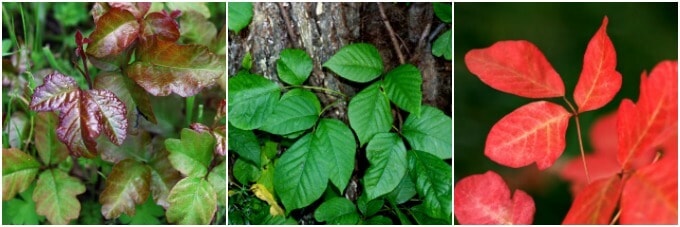
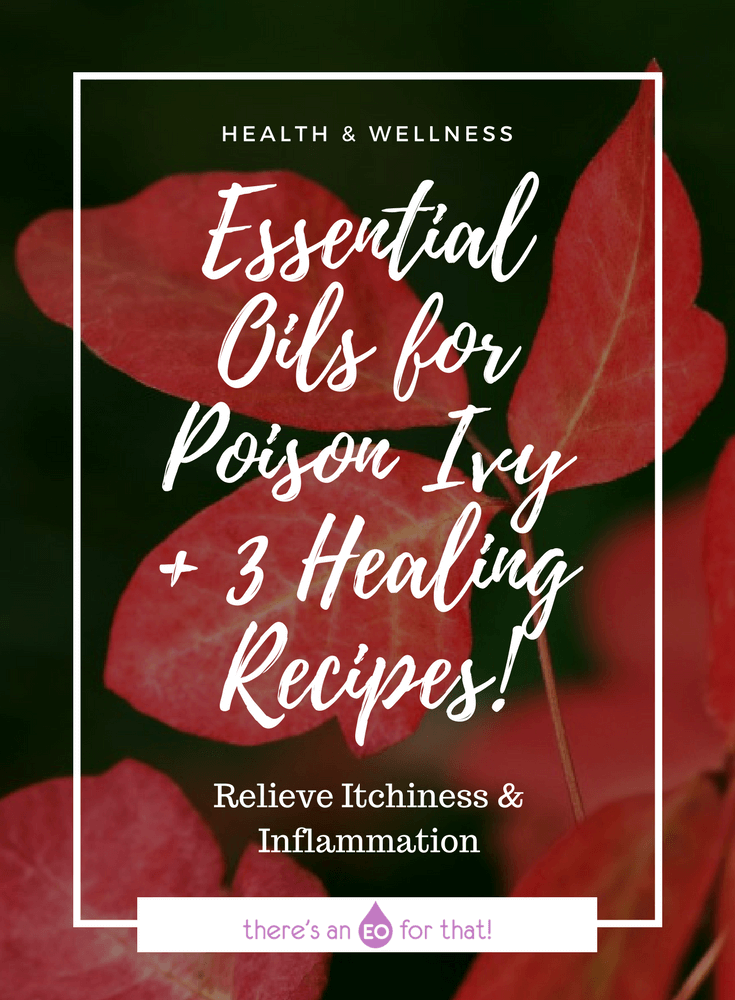
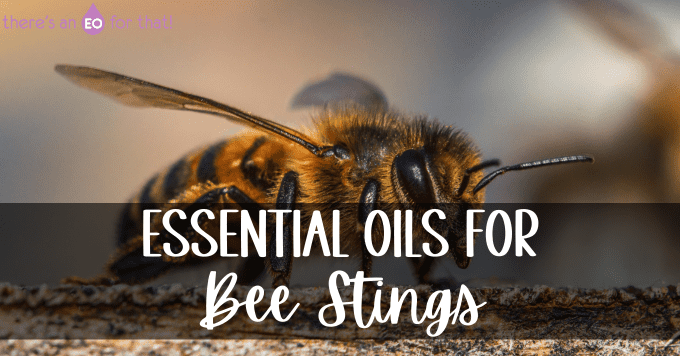
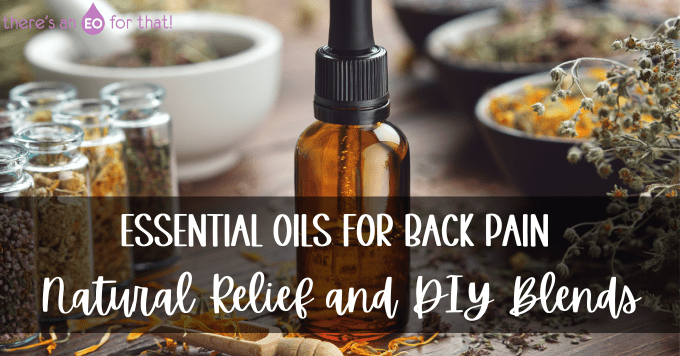
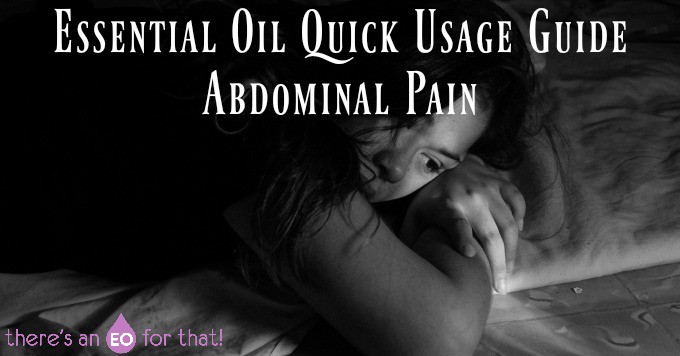

Brenda Rivet says
Thanks for the information. I love that it was so easy to access and simple to understand. Keep up the essential work. They are called "Essential" because they are "Essential!"
Tash says
Thanks Brenda!
Nazir Haji says
Hi
Nice post
Why are there no social share buttons like your posts used to have?
Tash says
Hi Nazir!
The reason is because the plugin I used for the buttons has been breaking a ton of websites. I'm waiting for them to fix everything before I reactivate it 🙂
Connie Plemons says
You might mention Geranium for the itch it works great as well. Maybe in combination with the others like peppermint and myrrh and lavender. Just a suggestion.
Tash says
Thanks for the tip Connie! I'll add it in 🙂